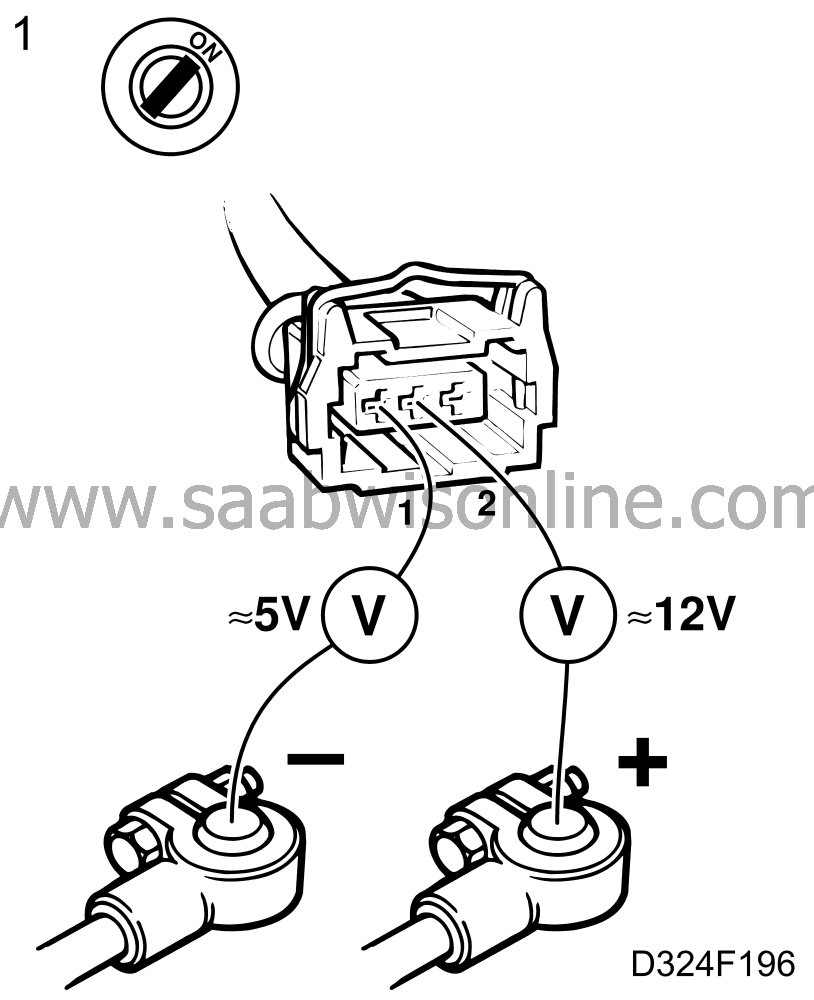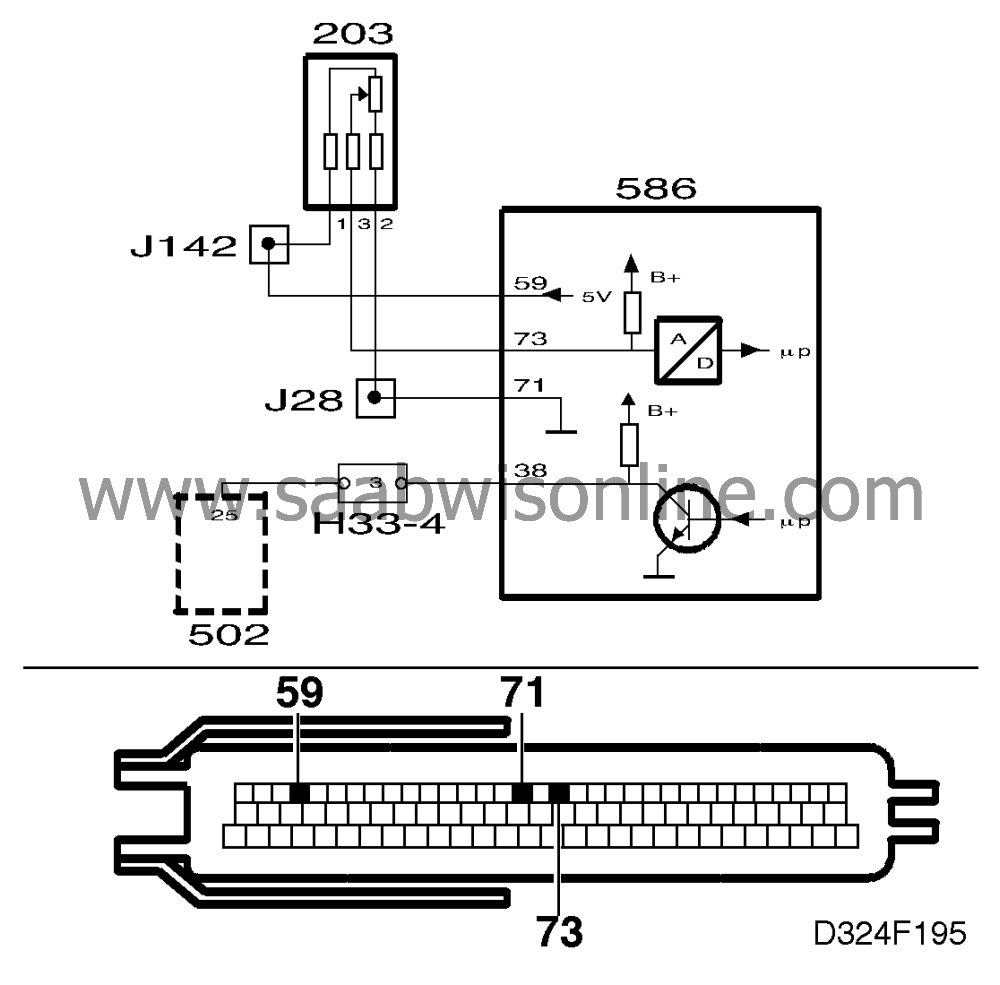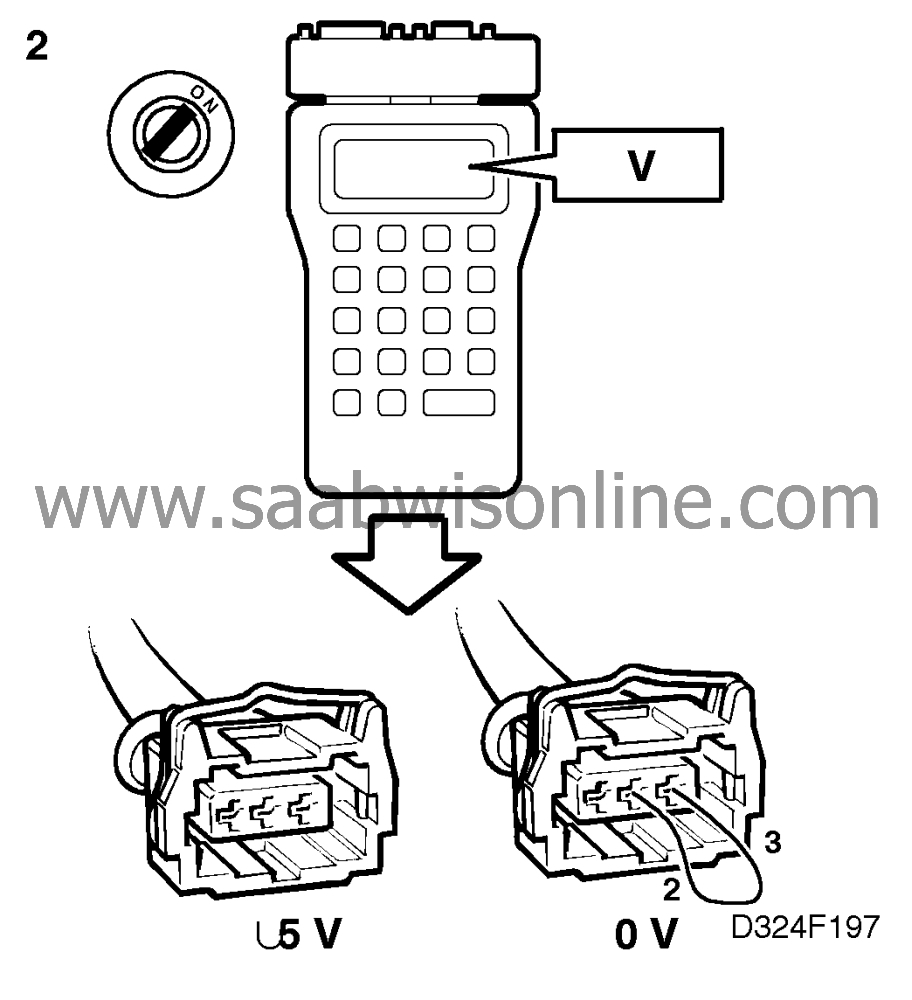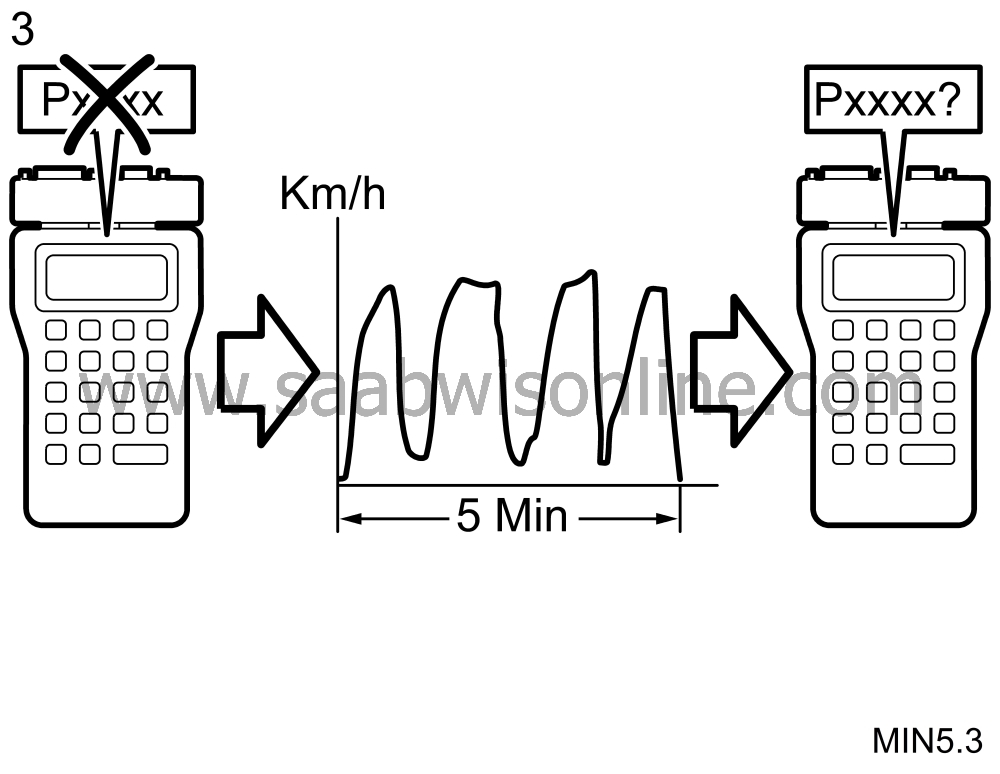P0122,P0123
Throttle position sensor
Fault symptoms
CHECK ENGINE lamp (MIL) on. Fast idling speed. A/C compressor does not work.
Conditions
P0122 Shorting to ground Throttle position <1.2%% / < 0.06 V
P0123 Shorting to battery positive (B+)/open circuit Throttle position >95%% / >4.75
V
Diagnostic help
The position of the throttle position sensor can be ascertained with an ISAT scan
tool.
|
-
|
Connect the ISAT Scan
Tool.
|
|
-
|
Turn the ignition switch to the ON position.
|
|
-
|
Select "READ FUNCTIONS".
|
|
-
|
Select "THROTT POS SENSOR".
|
If the throttle position sensor is in proper working order the ISAT scan tool
should show the current throttle position, between about 0.5 V and 4.5 V from unactuated to
fully depressed accelerator.
Check the wiring
Intermittent faults may occur as a result of temporary short circuits and breaks in the
wiring. Jiggle the wiring at several points and in different directions to ascertain whether the
wiring harness, including any connectors, is causing the trouble. Observe the multimeter,
ISAT scan tool or test lamp while doing this.
Diagnostic procedure
1. Check the throttle position sensor's ground connection and power
supply


|
-
|
Unplug the throttle position
sensor's 3-pin connector.
|
|
-
|
Turn the ignition switch to the ON position.
|
|
-
|
Take voltage readings on the connector contacts as
follows:
|
Are all readings OK?
Continue with point 2.
Check the relevant lead and repair or replace it if necessary. Continue with
point 3.
2. Check the control module's throttle position
input

|
-
|
Connect the ISAT Scan
Tool.
|
|
-
|
Turn the ignition switch to the ON position.
|
|
-
|
Select "READ FUNCTIONS".
|
|
-
|
Select "THROTT POS SENSOR".
|
The ISAT scan tool should show a reading of about 5 V (about
100%%).
|
-
|
Connect a jumper lead between
pins 2 and 3 of the throttle position sensor's connector.
|
The ISAT scan tool should show a reading of about 0 V (about
0%%).
Are all readings OK?
Change the throttle position sensor. Continue with point 3.
Check the relevant lead and repair or replace it if necessary. Continue with
point 3.
3. Final check

|
-
|
Clear the diagnostic trouble
code.
|
|
-
|
Implementation of driving cycle:
|
|
-
|
Evaluation of driving cycle:
|
Has the diagnostic trouble code recurred?
Continue as described in
 .
.
The steps taken to rectify the fault were
correct.







